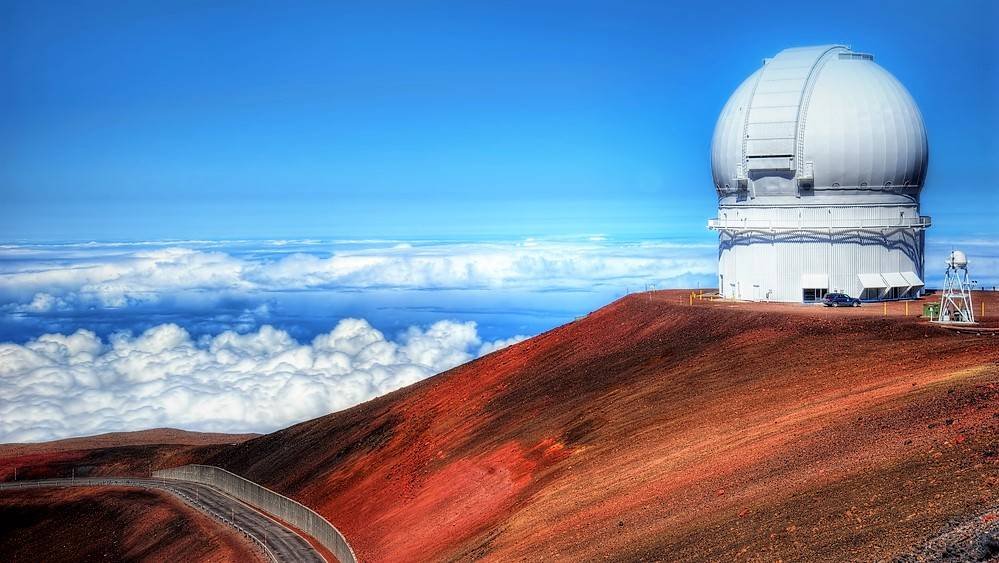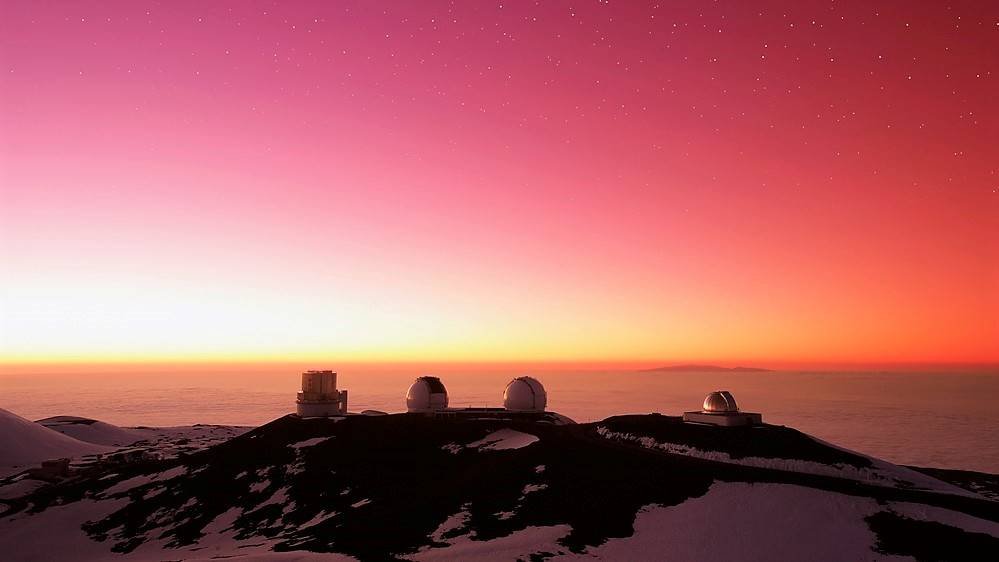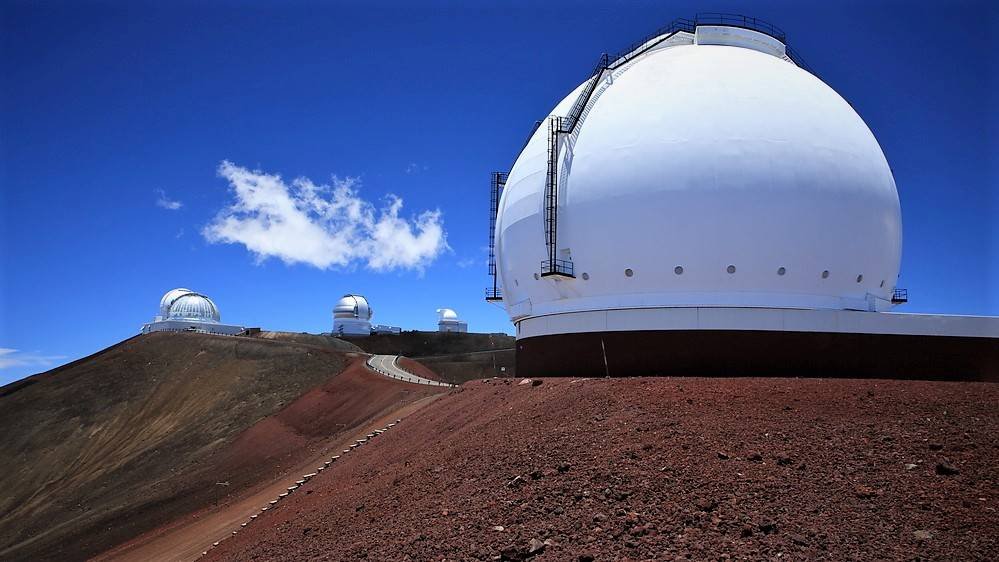Taking In The Views From Mauna Kea Observatory
Experience one of Earth’s most breathtaking astronomical views at Mauna Kea Observatory, atop Hawaii’s tallest mountain. Its summit offers unparalleled stargazing potential free from light pollution and human interference. With expert guides for guided tours, you’ll have access to incredible sights and exciting facts about celestial bodies. So explore this magical place and uncover its secrets!
Plus, here are three reasons why visiting Mauna Kea Observatory should be on your list:
- It is home to some of the world’s largest and most advanced telescopes – including those used by NASA for space exploration.
- It stands as one of the highest observatories in the world – making it an ideal location for stargazing.
- Its pristine sky allows astronomers to observe distant galaxies with ease.
Mauna Kea Quick Look
Maunakea Observatories is a collaboration of 12 non-profit observatories located in Maunakea, Hawai’i – the world’s most scientifically productive site for astronomy. Why is this so? Let’s take a look.
- The elevation is 4,205m.
- Located on the summit of Mauna Kea on the Big Island of Hawaii
- It is a 525-acre Astronomy Precinct within 11,228-acre Mauna Kea Science Reserve.
- Mauna Kea is the most scientifically productive site for astronomy worldwide.
- Its unique location offers scientists an unparalleled opportunity to study the universe.
- It has a high altitude, gentle slopes, calm air, and dark skies.
- Thirteen observation facilities funded by 11 countries
- The Hubble Space Telescope has a 2.4m mirror, similar to the UH88 (the University of Hawaii’s 88-inch or 2.24 meters) telescope on Mauna Kea.
- There are controversies surrounding new telescopes and potential negative consequences on native Hawaiian religion and culture, as well as ecological impacts.
- The Historical Preservation Act protects the mountain for its significance to Hawaiian culture.
- Position above most atmospheric water vapor, clean air, good weather, and low latitude.
Mauna Kea is the Perfect Place for Astronomy Research

Maunakea has it all. The unique location offers a variety of benefits for astronomy research, and these benefits include:
- High altitude
- Gentle slopes
- Calm air
- Dark skies
- Ability to detect seismic activity
- Resilience to natural disasters
The place is ideal for optical and infrared image quality. Its unique location surrounded by the Pacific Ocean gives the site low humidity and incredibly dark skies – You can’t beat it!
Maunakea’s advantages make it an ideal location for astronomical research and exploration. Its significance for scientific discoveries and its resilience to natural disasters make it a unique and valuable site for studying the universe.
Exploring Mauna Kea Mountain: A Unique Astronomy Site

Maunakea is a unique location for astronomy research due to its high altitude, gentle slopes, calm air, and dark skies. It is located on the Hawaiian Island of Hawaii, a 14,000-foot shield volcano surrounded by the Pacific Ocean. The Onizuka Center for International Astronomy is located at 9,300 feet, and visitors can acclimate to the atmosphere at the visitor station at 9,200 feet.
Hawaii’s 1901 Land Office Map showed an Astronomy Station near the Mauna Kea summit. Gerard Kuiper sought an arid site for infrared studies and built a small telescope on Pu’u Poli’ahu. John Jefferies bid on behalf of the University of Hawaii (UH) for a 2-meter telescope, and UH and NASA awarded the contract, causing Kuiper to abandon his site. In the 1970s, the United States Air Force and Lowell Observatory built two 24″ telescopes, and in 1973, Canada and France built the 3.6m CFHT.
In the late 1970s, the Department of Land and Natural Resources drafted a plan for Maunakea, which the UH Board approved of Regents in 1982. In 1998, 2,033 acres were transferred to the Ice Age Reserve, and in 2000, an extension plan was made to 2020 with the establishment of the Office of Mauna Kea Management. In total, 525 acres are dedicated to astronomy, and 10,763 acres are dedicated to preservation.
On October 15, 2006, an earthquake occurred in Kiholo Bay, with aftershocks also occurring. The JCMT recorded the earthquake on tilt sensors, and the CFHT and Keck Observatory were operational by October 19. This event demonstrated the ability of Maunakea’s telescopes to detect seismic activity and its resilience against natural disasters.
In November 2020, a super-planet was discovered at Maunakea. In October 2011, the Nobel Prize in Physics was awarded for discoveries made using Maunakea facilities, demonstrating the significance of the location and its continued scientific value.
Unfortunately, new telescopes can cause cultural and ecological impacts, leading to controversies. The multi-telescope’ outrigger’ extension has been canceled. Up to 13 existing telescopes may need to be dismantled, and the Hawaii Night Sky Protection Act has been established.
Telescopes
Maunakea is home to a variety of telescopes funded by various nations. UH administers two telescopes, with 13 telescopes at or around the summit. The proposed 30 Meter Telescope could be located at Maunakea or the Canary Islands. Additionally, the CSO, UKIRT, and Hoku Kea will be decommissioned.
The Thirty Meter Telescope (TMT) will revolutionize astronomy with its extraordinary vision, boasting a 30m diameter prime mirror, 80x the sensitivity of today’s most powerful telescopes, and adaptive optics systems. With TMT, they can explore exoplanetary systems, detect gravitational waves, and observe time-domain astronomy. A consortium of world-class organizations is building it on Mauna Kea on Hawaii Island due to its optimal climate for scientific research. TMT will bring discoveries to light and open up a world of possibilities.
Guidelines for visitors to Mauna Kea Observatory

Mauna Kea is a sacred mountain full of amazing natural and cultural wonders in the heart of the Hawaiian Islands. Whether you’re an avid hiker, scientist, or just a curious traveler, there are plenty of things to see and do here. But before you venture out, there are some essential rules and guidelines to follow for a safe and enjoyable experience.
- Register and use the buddy system at the Visitor Information Station (VIS).
- Those under 13, pregnant, intoxicated, SCUBA-diving within 24 hours and those with high blood pressure or heart/respiratory conditions should not ascend beyond the VIS.
- Be aware of altitude sickness and its symptoms and seek medical assistance if they occur.
- Be aware of more severe effects, such as pulmonary/cerebral edema, and seek medical help if they occur.
- Drink lots of water per hour and wear adequate cold-weather clothing when outdoors.
- Wear sunscreen and sunglasses, and avoid observatories and other structures.
- Be aware of the risks associated with extreme exposure and snow play, and remember that all snow play is at your own risk.
- Be aware of the risk of hypothermia and stay in your vehicle if stuck in a storm.
- Be vigilant of ice while driving and walking.
- Before going, call for current road conditions, and use a 4-wheel drive vehicle.
- Obey all road & area closures, rules, policies & ranger advisories.
- No drones or pets are allowed. Service animals must be leashed & under control.
- No radio, cell phone, etc., above VIS.
- No camping or fires allowed. No cigarettes/alcohol/drugs allowed.
- Commercial activities must have a UH permit.
- Stay on designated roads & trails.
- Use designated toilet & trash facilities.
- Leave Mauna as found.
- Don’t move any elements of the environment.
- Place all waste in designated receptacles.
- Seek help from the Maunakea Rangers for emergency assistance, information, and trail maintenance.
- In the event of an emergency, dial 911.
Institute for Astronomy, University of Hawaii
The Institute for Astronomy of the University of Hawaii has access to some of the best-observing sites in the world. They are advancing our understanding and knowledge of the cosmos.
Together with the observatories in Hawaii and their cutting-edge instrumentation, they are pushing the boundaries of science and technology. If you want to further your Astronomy education, the IFA offers a Ph.D., B.A., and B.S. in Astrophysics.
The IFA also engages in extensive public outreach to keep the public informed and updated on their discoveries. From news stories to community events, they are passionate about sharing their knowledge and inspiring the next generation of astronomers.
Visit Hawaii Today
When it comes to experiencing all that Hawaii has to offer, the Mauna Kea Observatory is a great place to start. Whether you’re exploring the coral reefs, admiring the marine wildlife, or attending the Merrie Monarch Hula Festival, there’s something for everyone in Hawaii.
And if you want to learn more about the islands, consider reading up on what to pack for your trip, competing in the Ironman race, exploring the national parks, and checking out the Hawaiian travel guide.
So don’t wait any longer – start planning your trip to Hawaii and discover all that this beautiful state has to offer!

